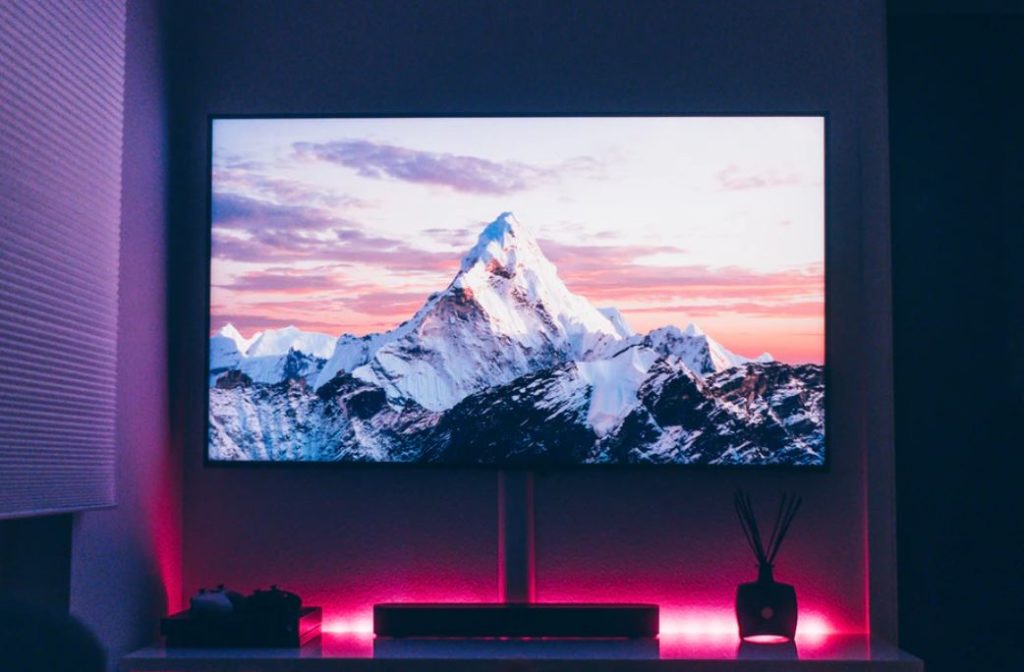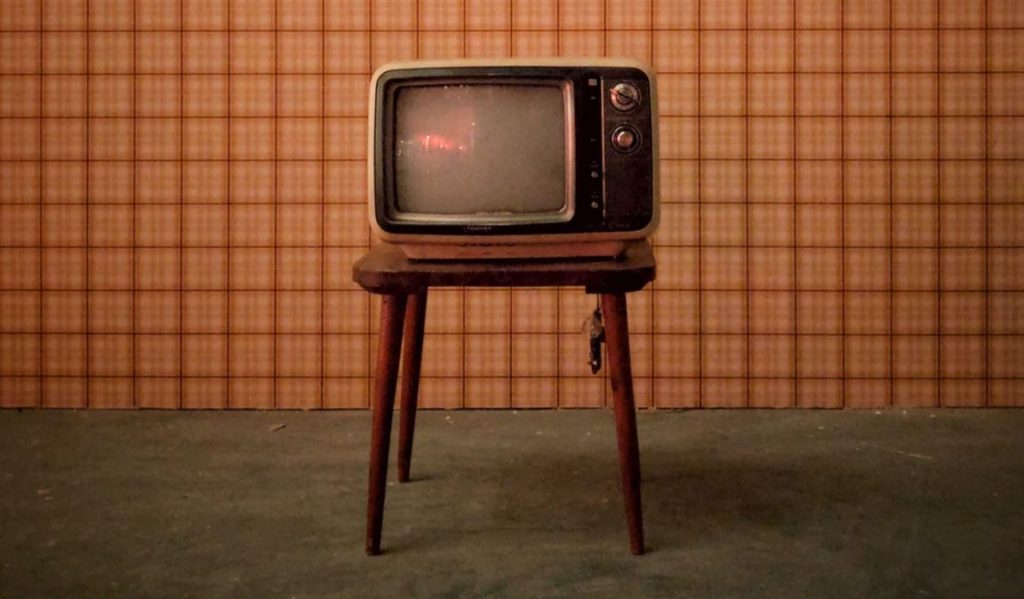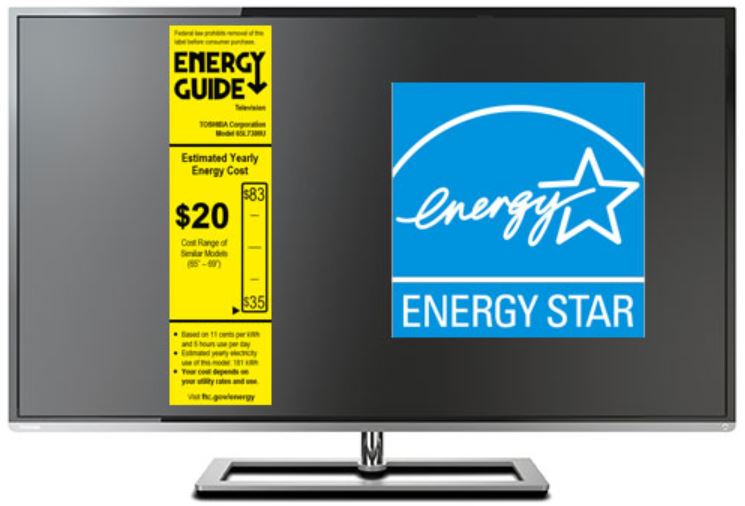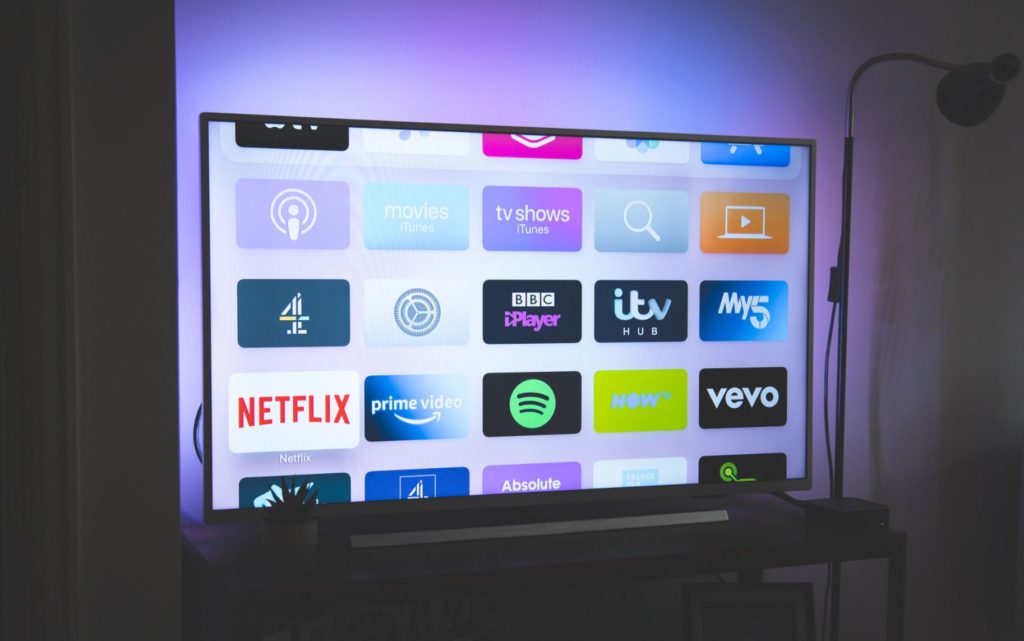Behind cell phones, TVs are probably the most common form of technology that someone owns. They’re becoming cheaper and more advanced by the day, which means you likely have a few TVs in your home, which leads to a common question, how much does a TV use in electricity?
We’ll answer that question and more in the following article, so keep reading to understand how your television is affecting your electric bill each month. However, if you’d like to skip to any specific section in the article, click on any of the links below and you’ll be taken directly to that section.
- How much does a TV use in electricity?
- What type of TVs use more energy?
- How to choose an energy efficient television?
- Energy saving tips for your television
How Much Does a TV Use in Electricity?
This question is the core of this article, so we’ll answer it first. Ultimately it depends on your make and model, however televisions generally use about 100 to 500 watts of electricity per hour.
While watts probably isn’t a useful metric to understand how much your TV is costing you, let’s talk about the cost in dollars. If your TV is 200 watts and you watch 3 hours of TV per day and you pay an average of 10 cents per kilowatt, it will only cost you $22 to run the TV for the entire year. So if you’re looking to save money on your electric bill, you might be better off looking at some other appliances.
Now, we used some averages there, but generally you shouldn’t be spending more than $100 year to use your televisions, as long as they’re not running 24/7.
And for some context, 500 watts may seem like a lot, but in the grand scheme of electrical use and compared to other appliances, it’s really not that much. Here are some common appliances and their energy usage compared to a television:
- Television: 200 watts per hour
- Refrigerator: 230 watts per hour
- Washing Machine: 250 watts per hour
- Dryer: 3,000 watts per hour
- AC Unit: 3,500 watts per hour
Now, you’re probably using your television more often than your dryer, but if you’re looking to save money on electricity, you’re probably better off understanding how you can use your dryer in lower priced times of day, such as night, or running your AC less or at a higher temperature.
What Type of TVs Use More Energy?
While we’re talking pretty general here, there are different types of televisions that use different amounts of electricity. You probably have a few different TVs in your home and they’re probably all different sizes, screen types, and utilize different technologies. All of those play a role in contributing to your electricity usage.
Screen Type
The biggest cause of discrepancies when it comes to electricity usage in televisions is the type of screen. There are 3 main types of television screens, LED, LCD, and Plasma.
LCD and LED have roughly the same power requirement, so you shouldn’t notice a big difference there. Those are also the newer types of screens that have benefited from recent advancements in technology.

Plasma and even older screens like CRT will take up a lot more energy use than the newer models. And this is just because of the older technology. It wasn’t nearly as efficient as the newer screens and as technology has advanced, the electrical requirement has decreased substantially.
So if you’re shopping for a new TV or would just like to lower your current electricity usage for any reason, you should choose one of the newer screen types, which would be an LED or LCD screen.
TV Size
While not as big of a factor, but people think is the largest reason for electricity usage is the size of your television. Larger TVs, such as 65 inches or bigger, use more electricity because of the larger surface size. There is more screen, which equates to more lighting and processing power, all of which equates to more electricity.
That would seem to make sense, but the difference between a 32 inch TV and a 65 inch TV is still pretty minimal. You shouldn’t base any TV purchasing decisions based on the amount of electricity a TV will use because the differences are so minimal that there are other, more important criteria to focus on.
Television Age
The age of your television is a big factor here, but not because a TV requires more electricity over time, but rather older TVs just aren’t as efficient. It was mentioned earlier, but technology has seen huge advancements in recent years. Those advancements have decreased the power necessary to run devices.

Ironically, as televisions get bigger, clearer, and have more integrated smart technology, the required energy to power them has also decreased.
So while age isn’t a direct factor of the required electricity to power your television, it’s directly correlated with older technologies that are less efficient and require more energy. If your TV is more than 8 years old at this point, the newer TVs will probably contain many newer features and use less electricity at the same time.
Smart TVs
As smart functionality is integrated into almost every aspect of our life, from doorbells, to coffee makers, and more, televisions are no exception. In fact, smart TVs were some of the first smart enabled appliances and as you guessed it, they do increase energy consumption.
Anything that requires more power or complexity, such as better screens, more pixels, or the ability to talk to your TV will require more energy. So if your TV is considered smart, then it’s likely to pull more electricity than a non-smart TV.
We’ve actually written about in in the past, specifically whether a smart TV will work without an internet connection. And to save you from having to jump to that article, yes, a smart TV will work without an internet connection as long as you’re not trying to use any functionality that requires the internet.
As for choosing a television with smart functionality, while yes it’s likely to use more electricity than a non-smart TV, it’s a safe bet that you’ll use something else to turn your TV smart, such as a Chromecast or Apple TV. Those may pull even more energy than the built-in smart functionality. However, neither if likely to be a substantial increase in energy usage, so go with the smart TV if you like that functionality.
How to Choose an Energy Efficient Television?
If you’re looking to purchase a new television soon and you want energy consumption to be a driving factor, you’re in luck because it has become much easier to tell which TVs are most efficient. And also, how much it will cost to run for a year.
If you walk around Best Buy, Costco, or Target and look at the televisions, you’ll probably notice a small, yellow sticker in the corner on almost every television. In the center is normally a dollar ($) amount, which tells you how much it will cost to run that television for a year based on average use. This is a number provided by Energy Star that shows how much energy that specific TV will use each year.

That is the quickest and easiest way to see which televisions are the most energy efficient. However, less energy consumption can affect other components of the TV as well.
If you’re only looking at how much it will cost to run, you’re going to miss out on other factors like size, screen type, features, and more. Just because a TV costs less to run doesn’t mean it’s the best TV out there.
So you have to weigh your options. A good rule of thumb is to narrow your choice down to 2 or 3 televisions. And if you would be happy with any of those 3, then look at the energy consumption for a year and see if there’s a major difference.
If one TV will cost $20 to run for a year and another will cost $80 and all other factors are the same to you, then it would make sense to go with the TV that will only cost you $20 to run for the year.
Energy Saving Tips for Your Television
If you want to save your electricity and lower your monthly bill, there are steps you can take to have your TVs be less of an electrical burden. It doesn’t hurt to conserve energy and if nothing else, you’re helping save the environment.
Here are a few tips to have your TV become more energy efficient.
- Turn off your TV when you’re not using it. If you’re not actively watching or listening to the television, make sure to turn it off. Just having it on even with a screensaver consumes the same amount of electricity if you were actually watching a show.
- Lower the brightness. By default, TVs normally have the brightness turned way up because it looks better, especially in stores. However, if you don’t need the brightness that high or you’re watching at night, turn the brightness setting down to save electricity. While this won’t have a major impact, any little bit helps, which is what we’re focused on here. Not to mention the higher brightness is probably not great for your eyes.

- Avoid older technologies like plasma and CRT. As mentioned earlier, older technologies like plasma and CRT are energy hogs. If you have TVs with these older technologies, consider upgrading your television to the newer screen types like LED or LCD.
- Turn off any “always on” features. While these features are great for convenience, they use electricity in the background. It’s not a ton of electricity, but if you’re serious about lowering the energy consumption of your TVs, then shutting these features off is a must. These features keep your TV on, so even if it looks like it’s off, it is sitting there using energy and increasing your electric bill.
- Utilize the sleep timer. If you watch TV when you’re falling asleep, which is common in many households, consider utilizing the sleep timer functionality, which will turn your TV off after a set amount of time. After all, if you’re not watching the TV, then it should be turned off.
- Turn off the screen if only listening to music. For many people, they use their TV as a sound system, playing music while others are over or you’re having a party. In this scenario, some TVs have the ability to turn the screen off, while continuing to play the music. This is a great way to save energy and avoid unnecessary electricity usage.
While TVs don’t consume the most energy of any given appliance in your home, it can’t hurt to follow the steps above to lower the electricity usage of all the TVs in your home. You might not notice a difference on only one television, but if you have 5 or 6 in your home, it could make a difference on your electric bill and the environment.
So make sure to turn off your TV if you’re not using it, avoid older technologies that hog electricity, and turn off the features that could be using electricity in the background. Sooner than later, you’ll be the most energy efficient household in your neighborhood.
Conclusion
Hopefully this article was useful for you and provided some additional context surrounding televisions and their electrical usage. In the grand scheme of things, it’s unlikely that your televisions are pulling substantial amounts of electricity each month, but it can’t hurt to be more energy efficient.
In all actuality, you’re probably only paying a couple dollars a month for each television in your home, if that. But that doesn’t mean you can’t be more efficient and reduce your television’s energy consumption.
We discussed what type of TVs use the most energy, how to choose the most energy efficient television, and how to reduce the energy usage of your TV. None of the advice or recommendations in this article are unreasonable, so we are confident that you can start saving on your electricity bill and saving the environment today.







